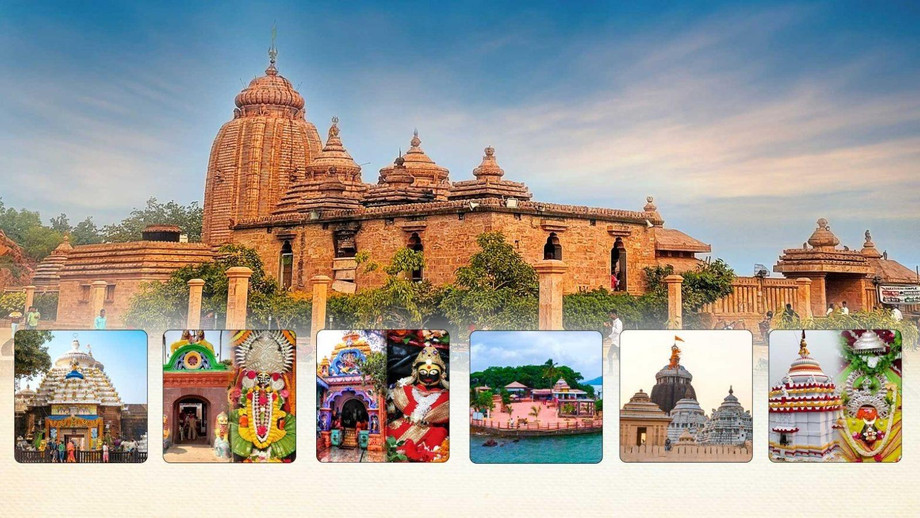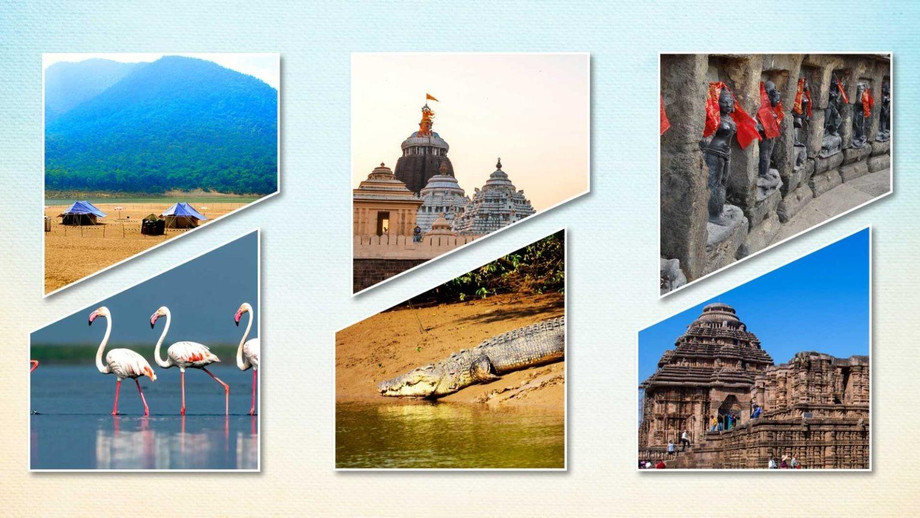Exclusive Odisha Tour Packages – Temples, Beaches & Wildlife
The temple bell at Lingaraj doesn’t wait for an audience. Neither do the waves at Gopalpur. Or the spotted deer in Bhitarkanika. Odisha functions on its own internal rhythm — less about spectacle, more about sequence. Rituals begin before daylight. Fishermen leave shore before the sea turns blue. In the forests, the movement is constant but rarely loud.
This is not a state that tailors itself for show. It never needed to. But in 2025, Odisha tour packages are finally starting to reflect what the state has long offered quietly: temples that live, coastlines that breathe, and wild spaces that don’t brand themselves for your camera.

Temples That Weren’t Built for Photos
Odisha’s temple landscape is not curated for tourism. It’s layered with lineage, geography, and function. The Lingaraj Temple in Bhubaneswar doesn’t pause for pictures — ceremonies unfold whether visitors watch or not. The temple tank, Bindu Sagar, holds centuries of ritual washings, yet doesn’t call attention to itself. Pigeons circle the spires. Devotees walk barefoot over sun-warmed stone. No signage explains the experience. And that’s exactly the point.
The Konark Sun Temple, in contrast, is no longer active. But its carved wheels and celestial friezes still mark time in their own way. Light angles through their spokes at equinox, not for display, but because they were designed that way. The temple is partially in ruin, but intact in message. It tells a story without narration.
Strong Odisha tour packages don’t list temples as stops. They build itineraries around time — morning light at Mukteshwar, evening shadows at Rajarani. They know that temple viewing here is not passive. It requires stillness, and sometimes waiting.
Beaches With Weathered Edges
Unlike west coast resorts, Odisha’s beaches do not perform. In Gopalpur-on-Sea, you won’t find curated beach clubs or prearranged loungers. What you will find is a town where colonial buildings meet brine-heavy air, and the sound of fish auctions carries louder than music.
The Mayfair Palm Beach Resort, housed in a restored heritage property, offers proximity without intrusion. Verandas face the sea, but don’t command it. Interiors show age — in the best way. Doors creak. Floors retain salt. Mornings involve tea on tiled terraces, not poolside DJs.

Further north, Puri’s coastline is less about luxury and more about living memory. Tour packages that include both beach time and temple exploration here allow for a full sensory mapping. The roar of the ocean merges with chants from the Jagannath Temple. Vendors selling khaja pastries thread between pilgrims and sunbathers without disruption.
And at Chandipur, the sea behaves differently altogether — disappearing for hours, receding over five kilometers at low tide. There’s no resort push here. Just a slow walk across wet sand where hermit crabs navigate beside your feet. Packages that include Chandipur don’t overpromise. They let the tide do the talking.
Wildlife Without Pomp
Odisha’s forests aren’t tamed for tourism. They are wild in the actual sense. In Bhitarkanika National Park, saltwater crocodiles sun themselves along creeks carved through tangled mangroves. The soundscape is full: bird calls, rustling branches, the occasional splash of a water monitor.
Unlike packaged safaris in central India or the rhino circuits of Assam, Bhitarkanika is best explored by boat. A responsible Odisha tour package includes a trained local guide — not just to spot wildlife, but to explain ecosystems. The forest here is not just inhabited. It is used — for honey collection, for seasonal fishing, for worship in some tribal communities.
Satkosia Gorge offers another kind of wilderness — deep canyons carved by the Mahanadi River, home to gharials, wild boar, and hornbills. Camps along the riverbanks offer basic accommodation, not luxury tents. But they allow for river walks at dawn, when mist clings to the water and the forest holds its breath.
Packages that cover Odisha’s wildlife aren’t polished, and shouldn’t be. They require waking early, walking carefully, and accepting that sightings are never guaranteed. What’s guaranteed is the terrain — unedited, uncurated, and still intact.
Threads, Textures, and Handwoven Time
Odisha’s textile traditions aren’t museum pieces. They’re ongoing. The ikat work of Sambalpuri saris, the earthy tones of Kotpad weaves, and the temple-inspired patterns of Bomkai fabrics are still woven on pit looms in village courtyards — not for export, but for use.
Nuapatna, about two hours from Bhubaneswar, is not a tourist town. But in its homes, threads are tied, dyed, and aligned with a level of precision passed down through demonstration — not documentation.
Odisha tour packages that include these textile circuits must do so responsibly. They must allow time for interaction, not extraction. Visitors are not meant to “shop the village.” They are meant to observe work as it’s done — hands tightening knots, vats of dye stirred with wooden paddles, patterns emerging row by row.
There is no glamour in the process. But there is beauty. And it does not need enhancement.
The Food Isn’t Reinterpreted
Meals in Odisha are not curated for effect. They follow season, soil, and salt. Pakhala — rice soaked overnight in water, served with fried vegetables and green chilies — is eaten for its cooling properties, not its aesthetics. At Anand Bazaar in Puri, temple food is sold daily — khichdi, dalma, sweets made from chhena. All cooked in clay pots over wood-fired stoves, in quantities large enough to feed thousands.
Cuttack offers chhena jhili and dahi bara aloo dum on footpaths, served on sal leaf plates. There are no garnish drizzles. Only flavor that builds, and lingers.
The best Odisha tour packages include these meals as part of the experience — not staged dinners, but everyday food served where it’s always been made. And if a place runs out by mid-afternoon, that’s not a fault in planning. That’s how Odisha works.
A State That Refuses Shortcuts
What makes Odisha distinct in 2025 is not just its offerings — temples, beaches, and wildlife — but its refusal to flatten those offerings into simplified experiences. It’s a state that rewards those who stay a little longer, who walk a little slower, and who ask fewer questions at the start.
The right Odisha tour package doesn’t promise transformation. It promises access — to lived ritual, working coastlines, functioning forests, and households that still wake before sunrise to boil milk over firewood.
There is no polished façade here. But there is clarity. And for many travelers today, that’s worth far more than spectacle.
Mail: tours.int@swosti.com
Mobile: +91 9338091727
Toll Free Number: +91-18001231414
Comments
Post a Comment